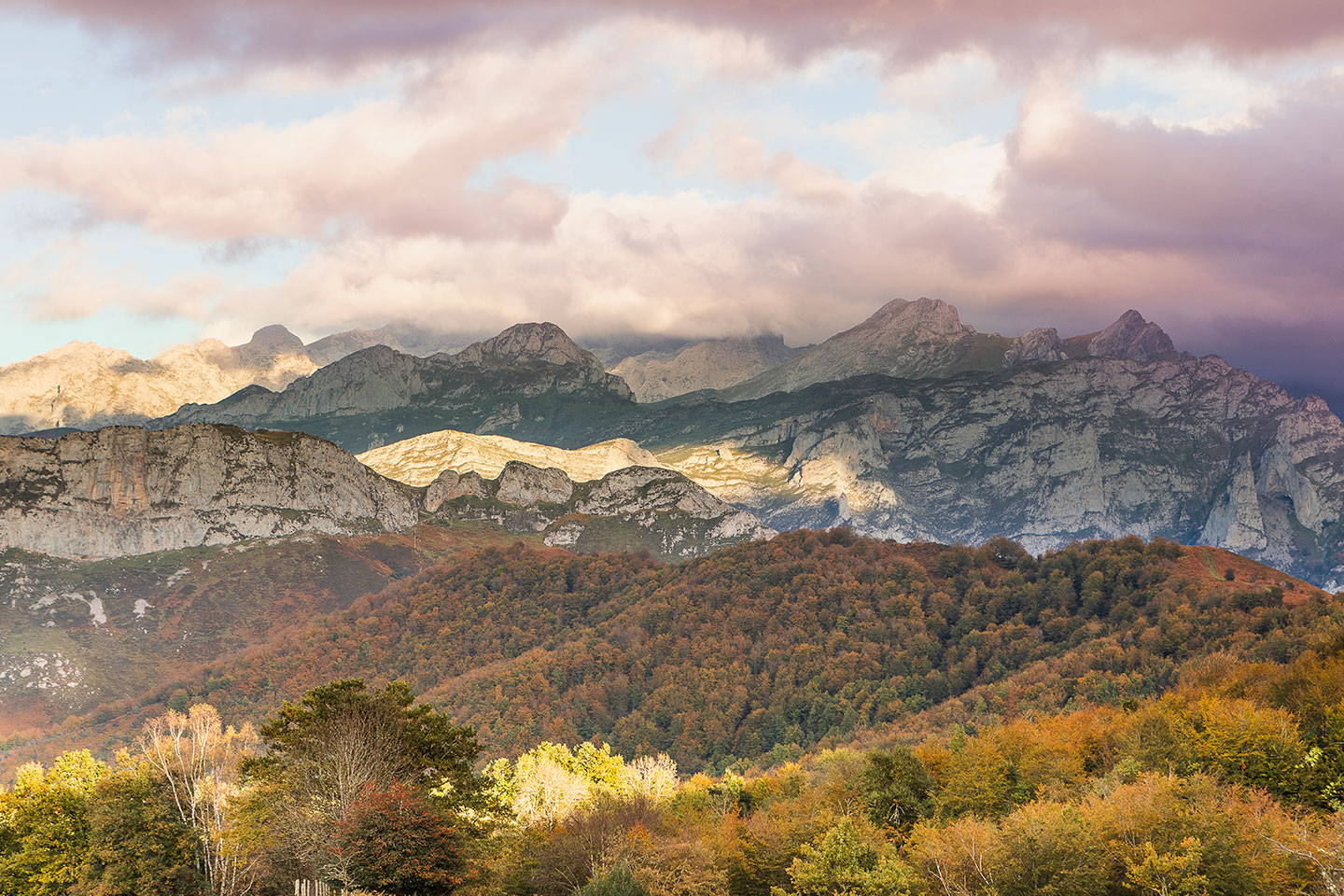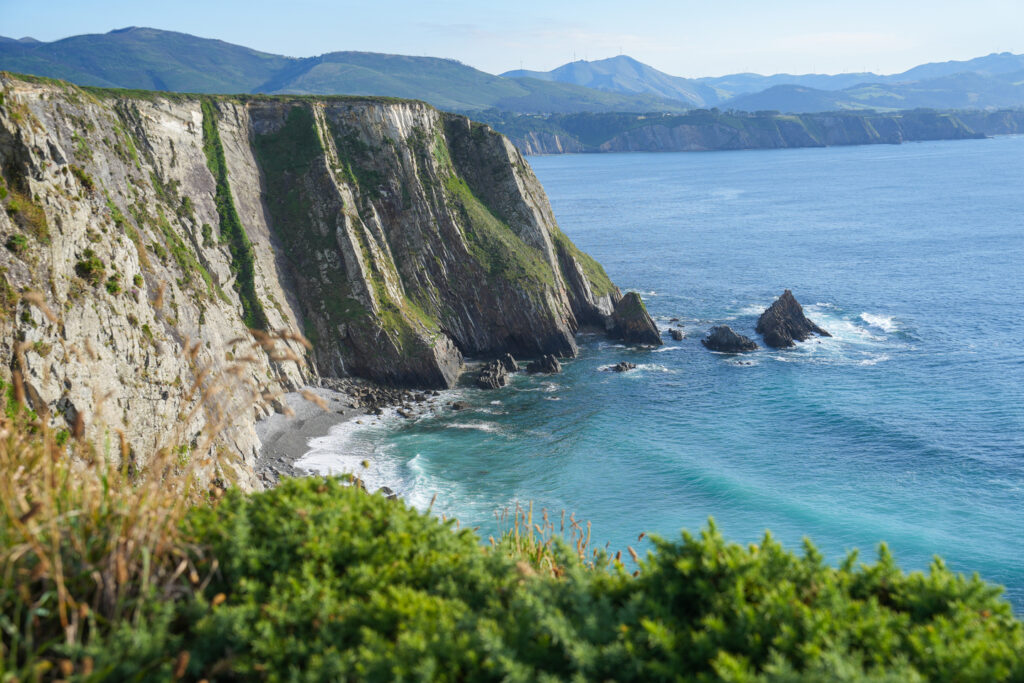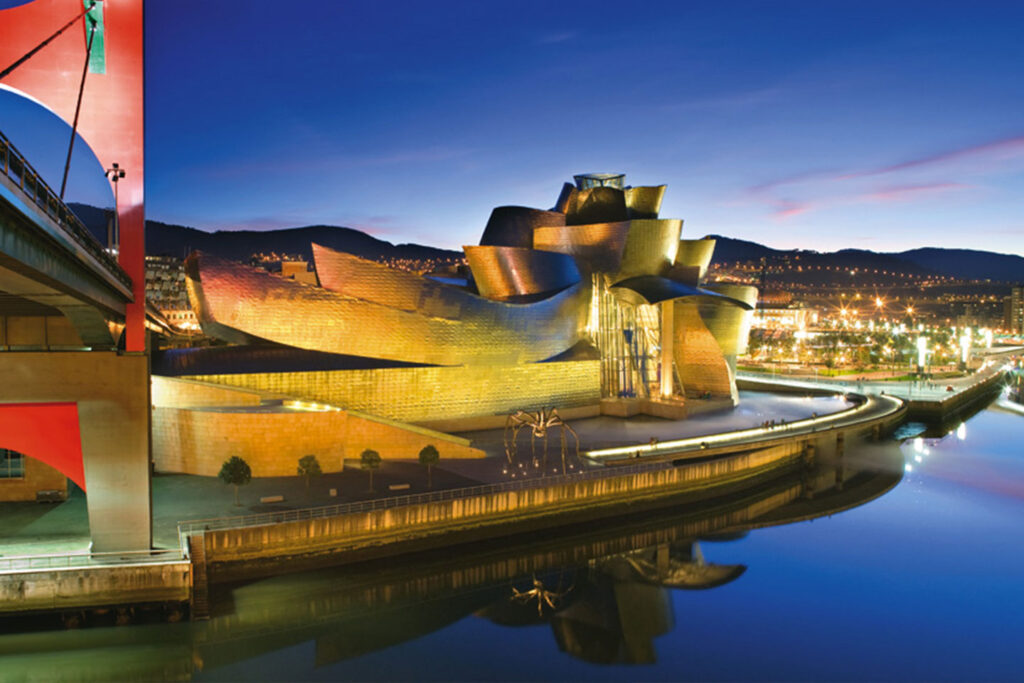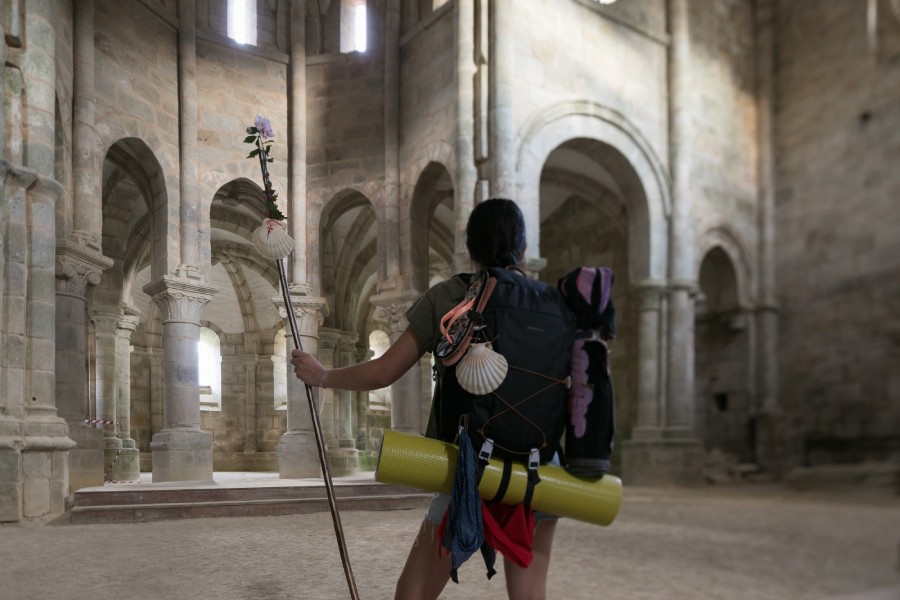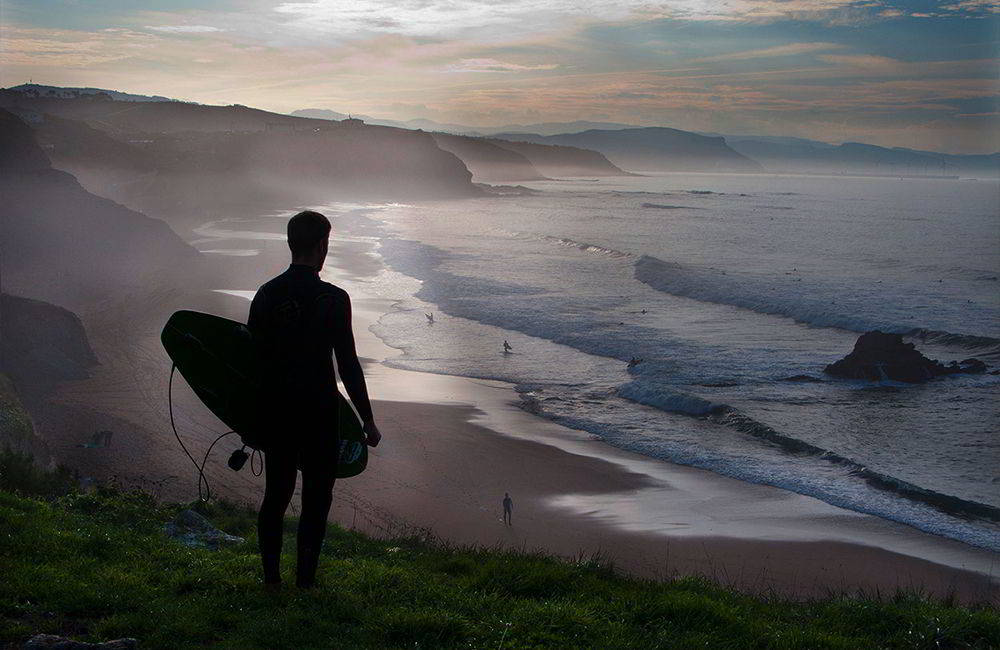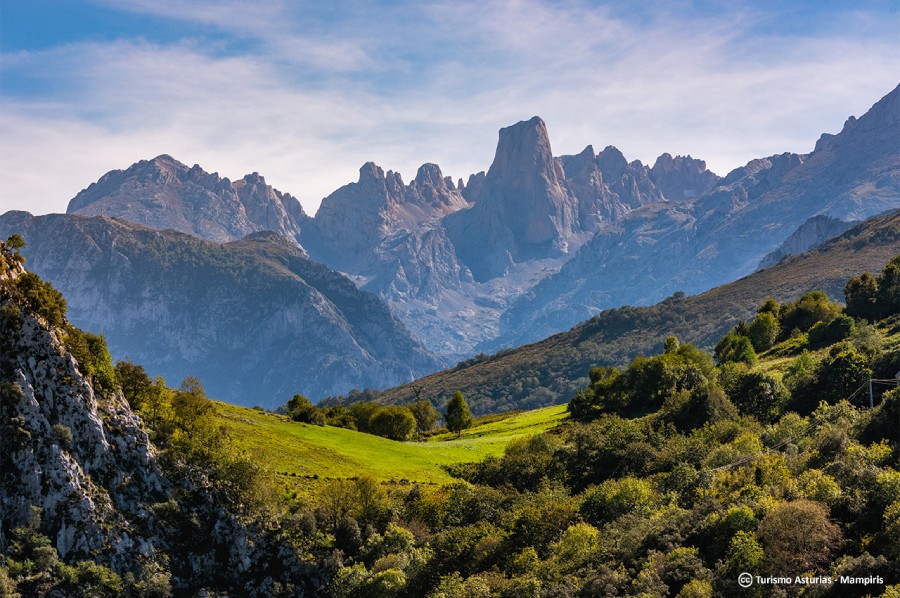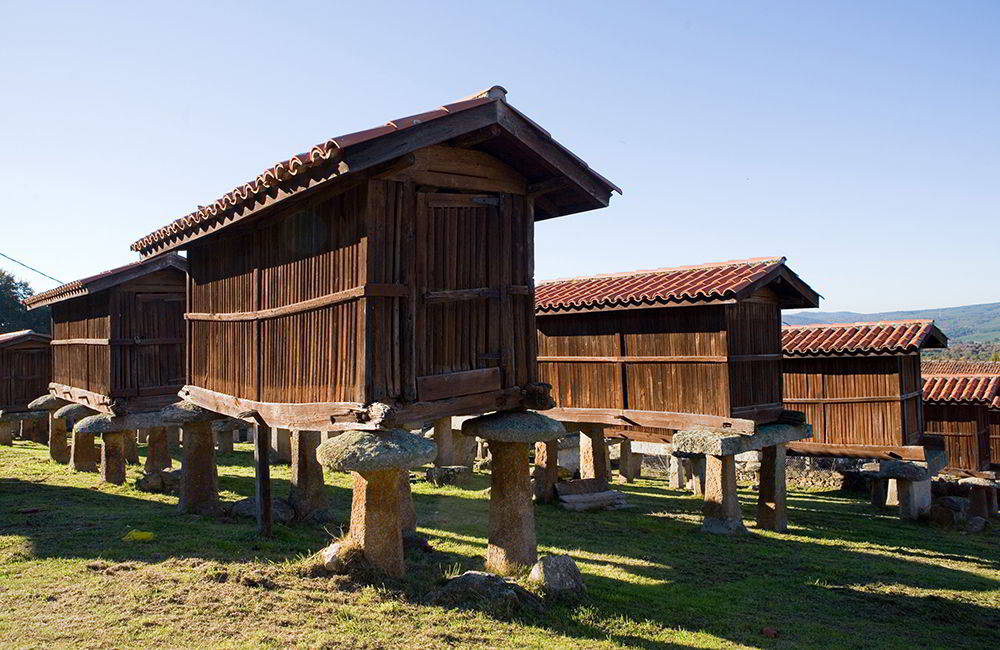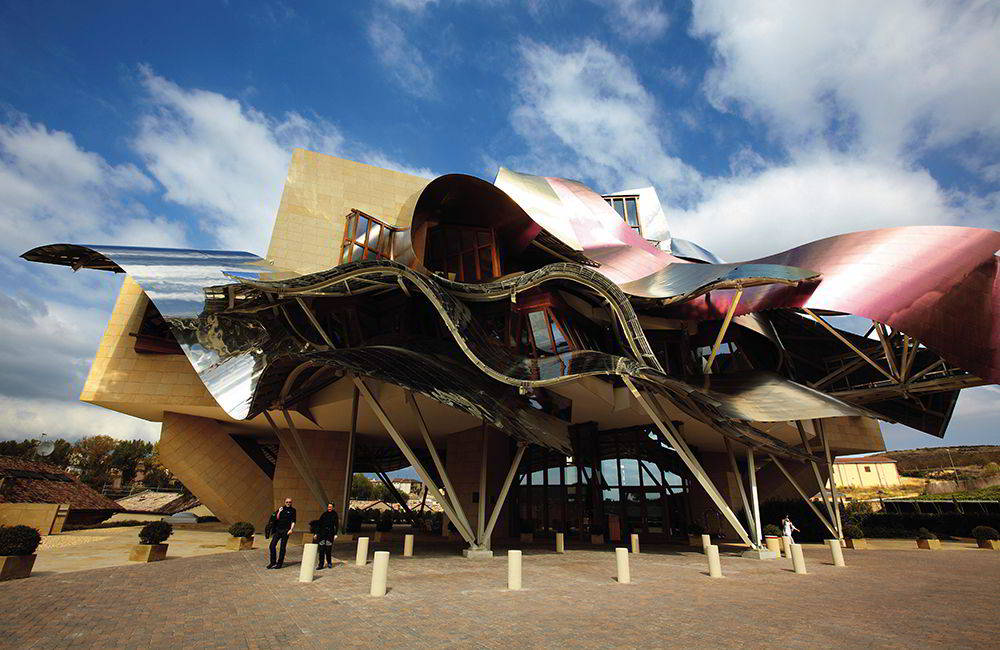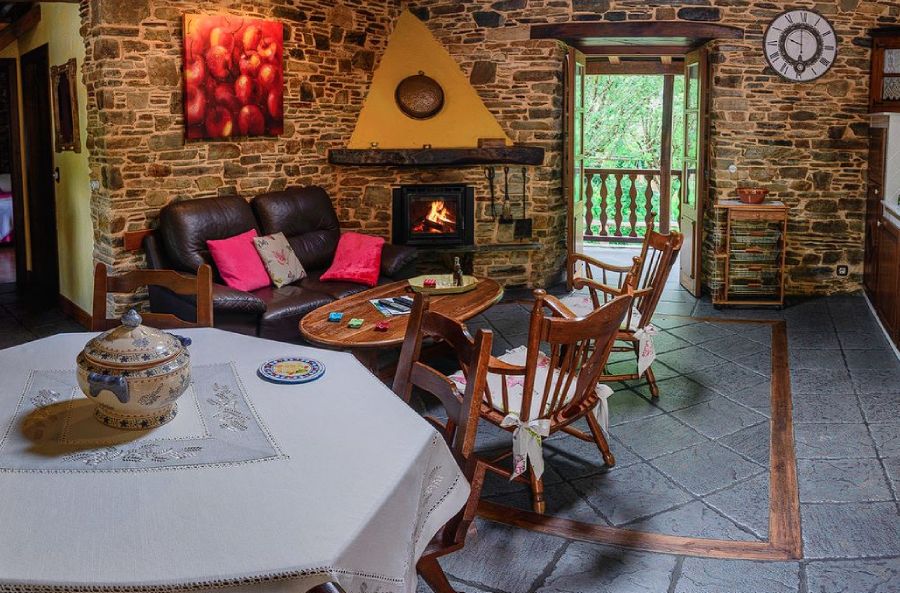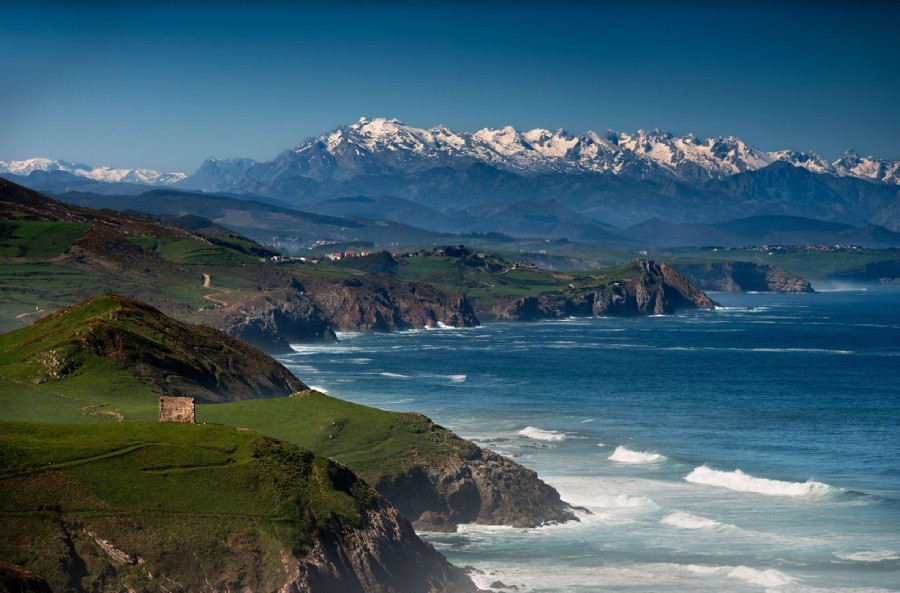Of the many ways to welcome a new year (or bid farewell to the previous one), climbing to the top of a mountain is a formula that never disappoints. From above, with your body flooded with endorphins, the future always looks optimistic. It’s no secret that Green Spain boasts many mountains. We’ve selected four of them (and the towns that serve as their gateways) to make 2025 the greenest and most memorable year of all.
Monte Pagasarri in Bilbao (Bizkaia)
What to see in Bilbao
‘El botxo’ is the nickname used by locals to refer to Bilbao. Translated literally from Basque, it means something like ‘hole’ or ‘pit.’ This is a nod to the unique geography of a city nestled in the narrow valley of the Nervión River, flanked by two small mountain ranges. From the viewpoint on one of these peaks (like Mount Artxanda, accessible via a convenient funicular), it’s easy to understand Bilbao and plan your visit. From the top, you can spot the Old Town watched over by the Arriaga Theater, glimpse the modern architecture along the riverbanks such as the Isozaki Towers or the Euskalduna Palace, and trace the route of Gran Vía, the city’s main commercial artery. Directly across from Artxanda, on the opposite bank of the Botxo, rises another iconic Bilbao mountain: the Pagasarri.
How to climb Mount Pagasarri
One of the great advantages of Pagasarri is that, living in Bilbao, you can forgo a car to reach its base: just a one-hour walk from Gran Vía to the Igertu parking area. This accessibility, combined with the mountaineering tradition in the Basque Country, makes the mountain a popular spot, especially on weekends and on January 1st—a symbolic date to greet the new year from its 673-meter height. The ascent is straightforward thanks to a network of wide forest trails crisscrossing the mountain. You can reach the summit by walking along these trails or through steeper connecting paths. Cyclists can also ascend using the well-compacted trails, though the inclines are steep for most of the route.
Picos de Europa National Park in Fuente Dé (Cantabria)
What to see in Fuente Dé
It’s hard to describe Fuente Dé with words because the landscape speaks for itself. It’s a glacial cirque, but such a definition falls short. Driving through the valley, one doesn’t expect to suddenly encounter a place like this: an immense curtain of limestone rocks embracing a fairytale-like valley, in the Cantabrian heart of the Picos de Europa National Park. A cable car—the area’s only significant human footprint—transports visitors almost literally to the heavens.
Fuente Dé is also the epic conclusion of an extraordinary adventure. It starts with the thrilling Hermida Gorge, pauses at Potes to explore its heritage (bridges, narrow streets, and towers) and sample Cantabrian delicacies, continues to the Santo Toribio Monastery (where the Lignum Crucis, the largest known fragment of Christ’s cross, is kept), and culminates with the charming Mogrovejo.
How to ascend the Picos de Europa
The Fuente Dé cable car is straightforward: in just four minutes, it bridges the gap between the valley and the cliffs, carrying visitors to an altitude of 1,823 meters. From there, the options are endless: spend hours enjoying the view from the Cable viewpoint while reflecting on what 2025 might bring, hike, cycle, or trail run across the Áliva meadows, reach the Áliva refuge hotel (open in spring and summer), or explore some of the certified short trails crisscrossing the park. In winter, it’s essential to check the weather conditions and plan accordingly.
Monte O Pindo in O Pindo (A Coruña)
What to see in O Pindo
O Pindo is a tiny village nestled in an imposing natural setting surrounded by extraordinary sights. Within a few kilometers, you’ll find not only the mountain but also two unique landmarks:
- The Ézaro Waterfall in Dumbría. It’s Europe’s only waterfall that empties directly into the ocean, creating a spectacular cascade over granite rocks, especially after rainfall.
- The Carnota Beach. Galicia’s longest beach (7 kilometers) offers breathtaking sunsets thanks to its westward orientation. The village of Carnota is also home to one of Galicia’s largest granaries, a 34-meter-long National Monument.
How to climb Monte O Pindo
The most common route to ascend O Pindo (627 meters) is the circular trail. Depending on your fitness level, you can start directly from O Pindo village or from the more accessible O Fieiro parking area. Walking through the mountain’s unique granite formations or reaching the summit, once a sacred site for the Celts, reveals extraordinary views. From the top, you’ll have a privileged panorama of what was once thought to be the end of the world, with a vast ocean horizon and the sun setting in its embrace. The sights include Carnota’s sandy stretch, the Fisterra Peninsula, and the Lobeira Islands.
Sendero de las Xanas in Villanueva (Asturias)
What to see in Villanueva
Villanueva is a charming, traditional Asturian village in the spacious valley of the Trubia River. It features a cluster of houses surrounding a beautiful medieval bridge. Travelers from Oviedo will notice the Senda del Oso, a Greenway repurposed from an old narrow-gauge mining railway. The trail is named after the brown bears that have found an ideal habitat in this area after years of conservation efforts.
How to hike the Sendero de las Xanas
The Sendero de las Xanas takes you into the heart of the gorge connecting the Trubia Valley with the highlands around Pedroveya. The trail, born from an unfinished early 20th-century road project, is a marvel for hikers. Covering four kilometers (eight round trip), it offers rocky cliffs, streams, mixed forests (hazelnut, ash, maple…), and wildlife such as golden eagles.
